Wild Bill Ketelhut provides the "blog" to this anti-blog

Wild At Heart
Royal Ontario Museum This week’s blog is way overdue so I appreciate your patience. Recently I traveled to Toronto for a fantastic weekend. One of the cornerstones of that weekend was attending the “Ultimate Dinosaurs: Giants From Gondwana” exhibit at the Royal Ontario Museum which I feel is one of the nicest museums in North America. I had the privilege to talk with Dr David Evans (the guy in the glasses below) while at the museum.
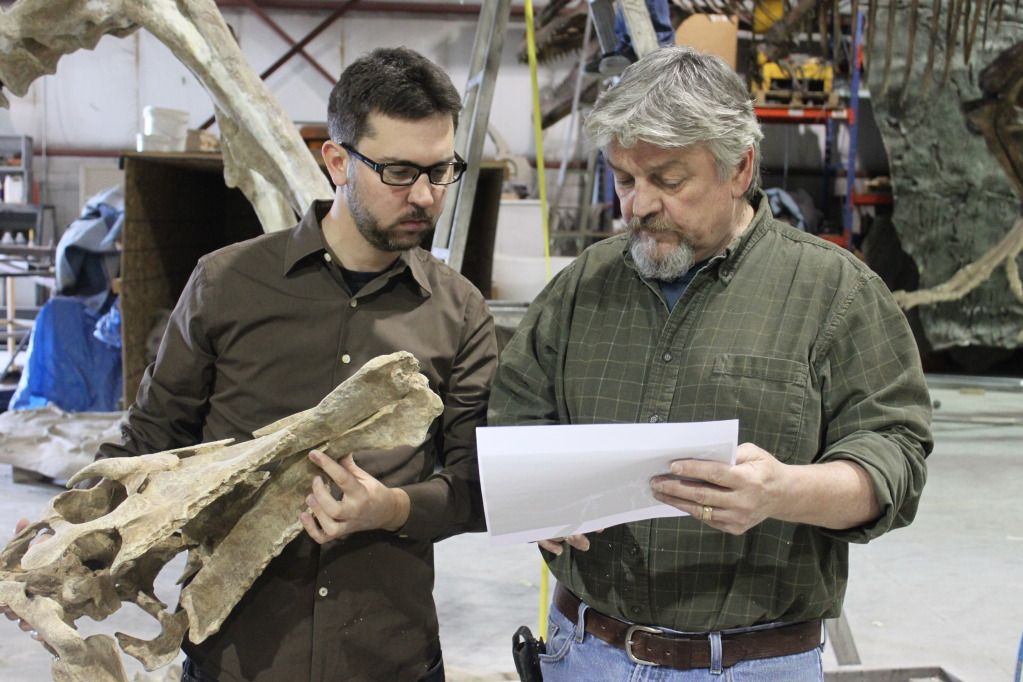
I have always been a big dinosaur lover ranging from a nice set of plastic dinosaurs I had as a kid (and still own) to watching movies ranging from 1918’s “The Land That Time Forgot” to “Jurassic Park” or TV shows from “Land Of The Lost” to “Primeaval”. Let’s not forget Godzilla or the Herculoids. I have read a lot of books on dinosaurs, esp in the area of extinction theory, so when I heard about this exhibit, I knew I had to go to Toronto to see it. There is just something cool about dinosaurs and all the work that goes into trying to piece together the puzzle that is their life. How did they look? How did they evolve? How did they die out? Dinosaurs have surely come a long way from the Iguanodon statues that appeared in 1854 at Crystal Palace Park in London.
When watching the news, there always seems to be a new dinosaur find and this exhibit showcases some of that. There is a lot of new stuff coming from the southern regions in the past 20 years. Dr Evans admits we have seen a “shift towards exploration in more remote and hospitable regions”. Frankly, there are “a lot of places we never had access to before”. For example, they were the first paleontologists to be in the Sudan. Most fossils found in these desert areas were originally found by geologists, some not knowing what they had, while looking for natural resources such as coal or oil.
Geologists will map out an area for resources and years later might find what they really have is a fossil when some fellow scientists just walks by and takes a look at it. One fossil story he told me was about a German surveyor who found what he thought was a piece of rock and it was sitting on his desk for years before getting into the hands of a mammal expert who realized it was more than just rock. This reminds me of stories of the mastodon skeleton found in the Rochester, MI area where they were doing some digging for a sewer line and came across the bones in someone’s yard which eventually ended up on display at Cranbrook.
The desolation and climate paves the way for potential new and untouched remains especially in regards to new species. The dessert areas have been largely untouched by man and a lot of bones are near the surfaces having been undisturbed for years. If you can find one bone, there is a strong likelihood you could find a complete skeleton. You basicallywalk around and “look for bone weathering out of bedrock until you find something”. This is not an easy quick process, but once again, if you can find one good fossil you will most likely find a few more nearby.
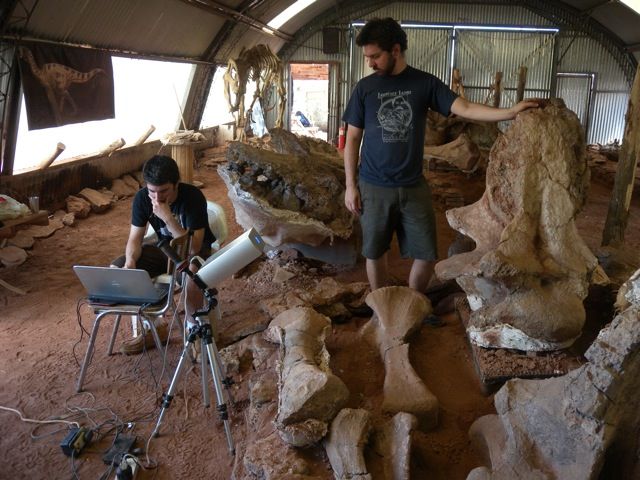
A lot of the bones on display are casts of the original skeletons which might seem to be a let down but there is good reason. “Original skeletons cannot leave the country of origin” with the idea being with travel there is a chance bones could get lost or damaged. What if a boat sank or a plane crashed carrying these remains. You could be losing the only set known to science in some cases. Most of the skeletons on display are based on the nearly full skeletal systems of dinosaurs which are the most complete set, and mabye only, of there relative species. Actually, a lot of what they have on display are the fossils that were used to come up with the actual names of the species. Dr Evans points out the people like to see there dinosaurs in dynamic poses. Real “fossils are heavy and you cannot have them in the dynamic posses”.

However, there are some real displays here also including a hands on area where you can touch and interact with real bones. Dr Evans feels that “it is very important to touch the real thing” so they got some of the more common bones which if they get damaged can be replaced. It is important to engage people in this way as we are a very tactile species ourself. As babies we want to put everything in our mouth and while I didn’t do this with the fossils, it really brings it home that these remains belong to an animal that no longer exists and in some cases are really unique. You can almost feel the history and become involved in the history of these creatures in a way you cannot by just looking.
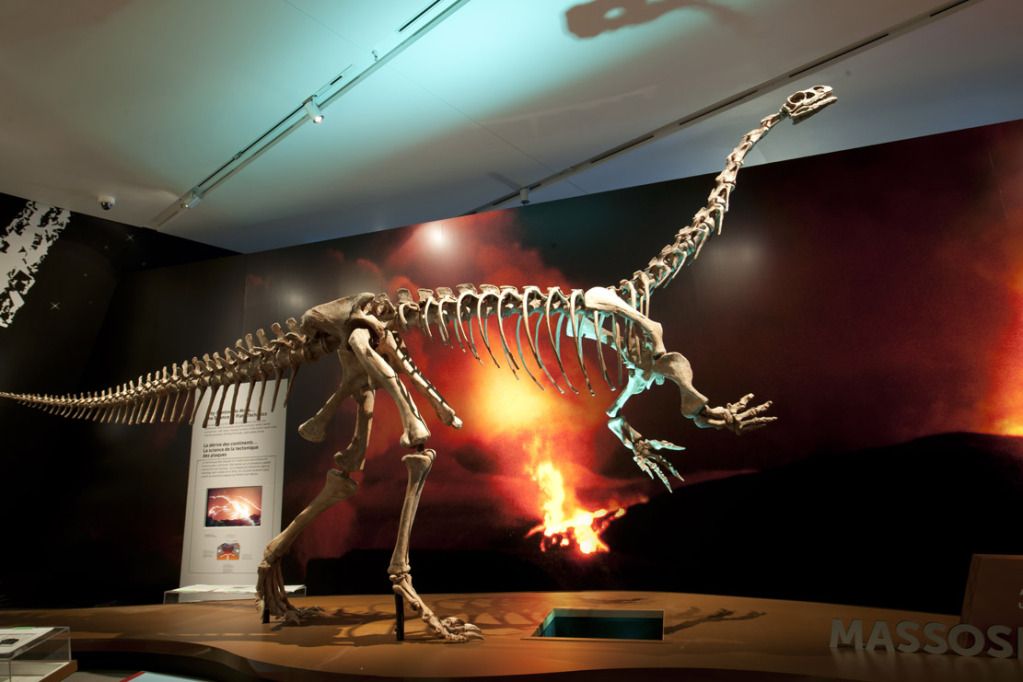

Dr Evans does wonder if he did his job selecting the dinosaurs for the exhibit as he worked hard to bring us “some of the best perserved, oddest and most complete dinosaurs” for the exhibit. I think he did a wonderful job. With such a collection of interesting species, I did ask him to pick a favorite. I did expect a lot of thinking but he came right out with the Oranosaurus from the Sahara region which is a relative of the duck billed dinosaur family. This dinosaur is most into his specialty which is why it holds a dear spot in the collection and he admits even he “had never seen one before”. So if we can geek out a guy who travels to dig sites and does this for a living, you know you are into something special.

A lot of the dinosaurs on display also have never been seen on display are special including the centerpiece of the collection and the largest dinosaur ever mounted in Canada, the Futalognkosaurus (seen below) which is just amazing. When looking up at this skeleton, you kind of get an impression of the size and it is incredible. I also think what it would look like with flesh and bone and it could be an imposing sight. It reminds me of the first time I saw ‘Jurassic Park’ and sat there amazing as I shared the theatre with Sam watching the first shot of the dinosaurs over the horizon. It just becomes something magical.

The other big difference I briefly mentioned earlier is that these dinosaurs mainly come from the Southern hemisphere which tended to produce bigger and more diverse specimens. This has to do with a combination of “evolution and isolation” as Pangea split and allowed various dinosaurs to experiment with different forms. It is like looking at the world today and seeing the animal life of Autralia, Africa or South America. While certain species have similarities with North America or Europe, there are a lot of unique creatures ranging from the kangaroo to the platypus that do not have any similarities up here. We get to see some of that with these dinosaurs and relatives. Some of my favorite guys include the variety of crocodiles on display like the massive Prestosuchus which is definitely a creature I would not want to meet near the water hole at night. Crocs are the closest relative today (as well as birds) of the dinosaurs and the main difference comes down to the fact that dinos have hind legs and hip joints which crocs don’t.
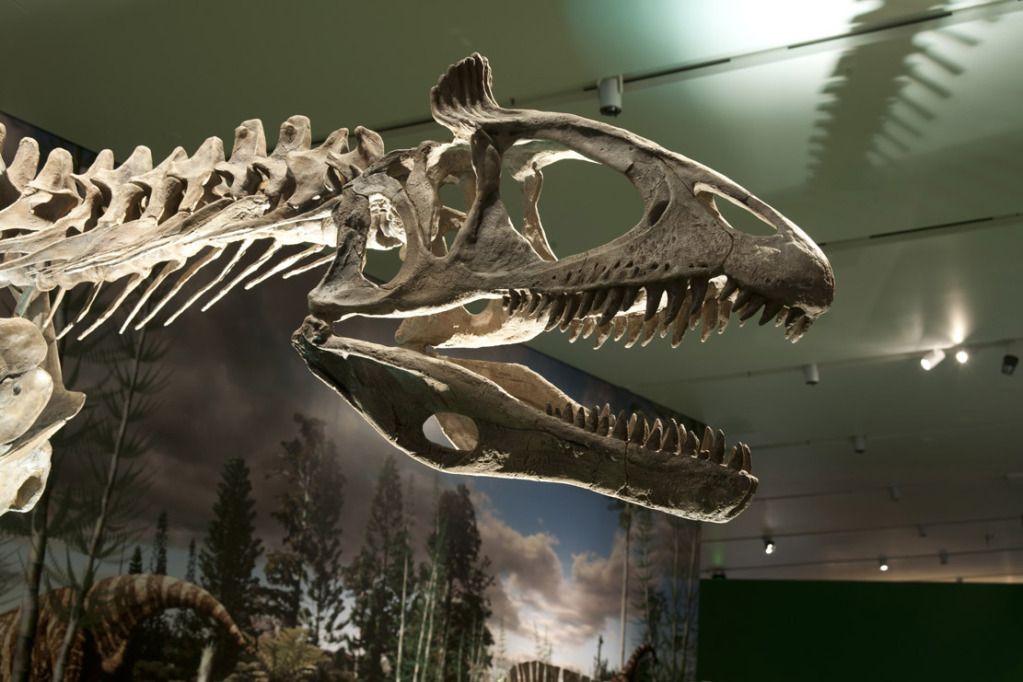

While I liked to talk about extinction theory and how they found these bad boys, Dr Evans did point out the wonderful technology of the displays. Not only do we have 20 full sized dinosaurs presented in dynamic fashion (along with a lot of smaller ones), there is a lot of technology in the exhibit. One of the favorite is a flesh adding program which is like a reverse X-ray (called augmented reality or AR). You can look at the skeletons of a few of the beasts and it shows you what they would look like with actual flesh and nothing is cooler than thinking a Giganotosaurus is looking at you like you are dinner.
They also have some nice interactive murals, like those used in the video game “Dance Dance Revolution”, where the dinosaurs on the wall will react to the presence of us mere humans which is something I have never seen in a museum before. The tech while enhancing the experience in no way diminishes it. The skeletons are the big show and they stand out among all the wonderful signage and technology to give one the the most informative and interactive dinosaur displays I have ever seen.
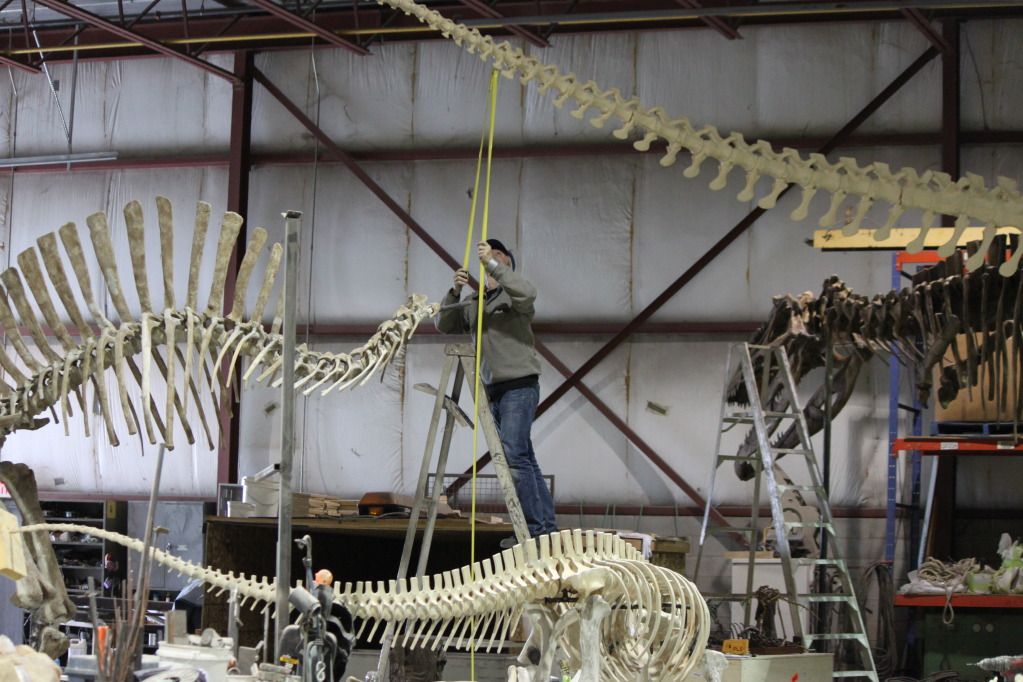
The ROM does have some nice dinosaur displays upstairs and locally you can see some stuff at Cranbrook Science, Stones N Bones (in Sarnia) and the Natural History Museum on the campus of Michigan University but you have not had a real dinosaur experience until you have seen this mouth-watering exhibit. This is the crème-de-la-crème exhibit I have ever seen and knowing I am seeing a number of these dinosaurs for the first time is a real thrill, like the Crylophosaurus (the 1st named dinosaur found from Antartica) or the distinctive Amargasaurus with is large spines going down it’s back. We might still be debating what killed the dinosaurs but there can be no debating about whether you should see this exhibit. One of the best of it’s kind at one of the greatest museums in North America.


Check out the site http://www.rom.on.ca/dinos/exhibition/host.php and make your plans now. They also have a cool lecture series which you can find online. The next is Phil Currie, Professor and Canada Research Chair in Dinosaur Palaeobiology from the University of Alberta, and co-founder of the Royal Tyrrell Museum of Palaeontology who was also one of the models for palaeontologist Alan Grant in the film ”Jurassic Park” on October 7th talking on “Mega Claws and Teeth: The Argentina-Canada Dinosaur Project”. There are three other speakers left including Dr Evans in November who is really passionate about his work as I could tell as he was nice enough to answer questions for the occasional person that was overhearing our interview. He excitement was getting people to notice and just listen to what he was saying so his talk should be excellent.
If you go up in November, you can also take in both the James Bond (paid exhibit) and X-Men make-up exhibits (free) at the TIFF which I hope to do when I am in town to see New Order. Speaking of them, here are some choice concerts to see this week.
Tuesday (10/02) – Ben Folds Five @ Fillmore Theatre, Gossip @ Majestic Theatre
Wednesday (10/03) – Neil Young & Crazy Horse w/Los Lobos @ WFCU Center (Windsor)
Thursday (10/04) – Eric Church @ Joe Louis Arena
Saturday (10/06) – Burton Cummings @ Macomb Center for the Performing Arts, Twistin Tarantulas @ Cadillac Jacks (Warren)
Sunday (10/07) – Owl City @ Crofoot, Taking Back Sunday w/Bayside @ Fillmore Theatre
